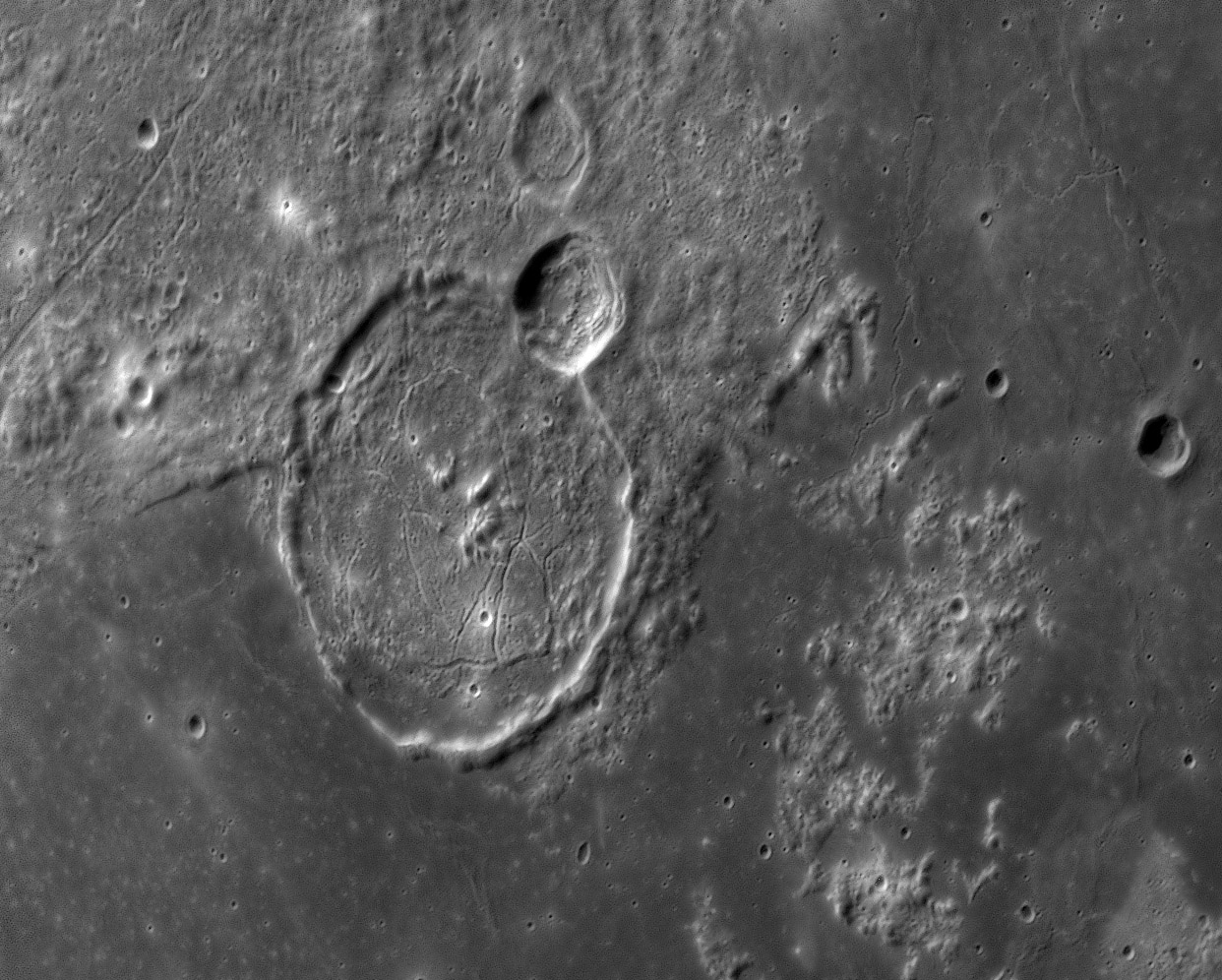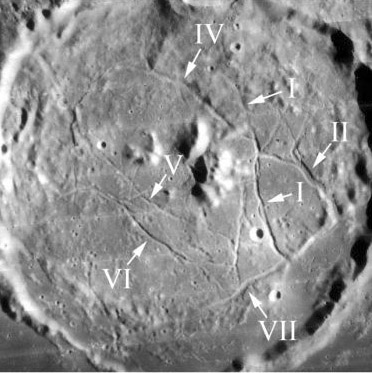November 7, 2013
Silly Big Image, Silly Diverse Rilles

image above by Michael Wirths, Baja California, Mexico
Lunar Orbiter IV image below from MoonWiki
 |
This is about 50% of Mike's first image with a new camera - as he said the images are getting silly big. But bigness isn't a problem when so many fascinating features are shown. Usually we see Gassendi - and most areas - with dramatic lower lighting, but looking at other illuminations provides new perspectives on landscapes. This high Sun view shows the complex rille pattern on the crater floor. Rille VII is a good place to start for although it is wide and well defined, what happens at its ends is unclear. On the east it could conceivable have turned north and continued as Rille I but I don't think that is the explanation. I think rille I flowed downhill to the south and emptied into the low, mare-covered area, just as Rille II does, or did. In fact, these rilles may have carried the lavas that filled that low annular zone. Interestingly, the unnumbered rille just above the arrow for Rille VII was cut off by VII. On its west end VII gets lost in a jumbled terrain of blocks, scruffy lavas and ridges. LRO QuickMap shows rille pieces near the bottom of the V in VI that could be former extensions of VII. Rille IV is quite peculiar. As seen in the Lunar Orbiter image it cuts across rough terrain north of the central peaks, and Mike's image shows that it continues westward and bends 180° while climbing up and going down slumped wall terraces. If you look away from Gassendi you'll see a straight rille to its west, and to the east the two windy Herigonius rilles that are sinuous. In this one area north of the Humorum Basin we find three different types of rilles with multiple origins and associated with different stress fields. What fun.
|
Yesterday's LPOD: A Stiletto's Gap And Archimedes' Bench
Tomorrow's LPOD: Slo-Mo Blink
COMMENTS?
Register, Log in, and join in the comments.



